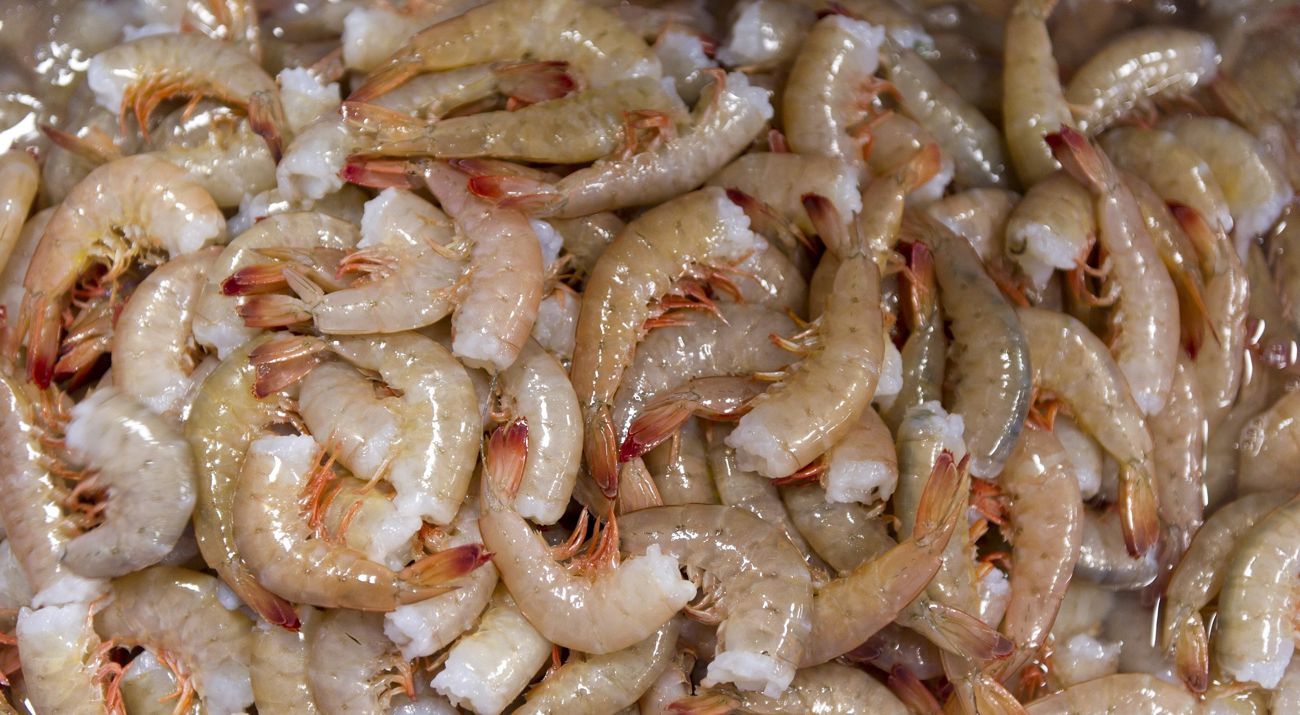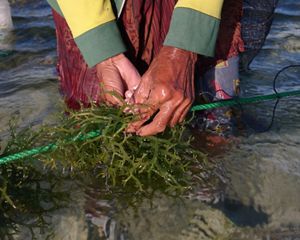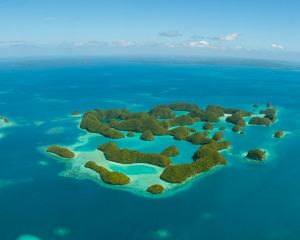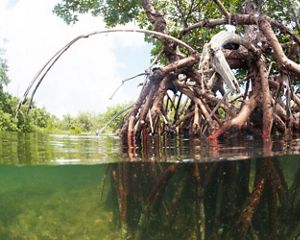Better Shrimp Farming Could Take a Bite Out of Carbon Emissions
As America’s most popular seafood, shrimp is a key target for carbon reductions.
Though I’ve dedicated my career to advancing sustainable aquaculture, until recently, I hadn't worked on the United States’ most popular seafood: shrimp. With numerous sustainability intiatives underway, I instead focused on other aquaculture sectors that have received less attention and where I felt quicker progress could be made.
However, the currently unaddressed climate impacts of shrimp farming made me reconsider. At an average of 13 kg of CO2 equivalents per kilogram, shrimp production has a larger carbon footprint than most other seafood products, emitting about twice as much greenhouse gases as salmon production. When land conversion to create new ponds is considered, the emissions profile of shrimp farming can be even greater than beef production. But these environmental challenges aren’t unavoidable – better, more sustainable shrimp farming is possible.

Sustainable Feed, Sustainable Farms
About half of shrimp’s carbon footprint is related to feed production. Shrimp diets are nearly 30% soy, which can be an environmentally problematic ingredient; the expansion of soybean farms is one of the leading drivers of land conversion and deforestation in South America. Sourcing soy that does not contribute to deforestation or habitat degradation is an important commitment farmers can make to reduce their carbon footprints. Another way to reduce the carbon impact of feed is to simply use less of it. A high-quality feed can improve feed conversion ratios – meaning that shrimp can consume a smaller amount of food to grow to the same size.
The other half of shrimp’s carbon footprint comes from the energy used to mechanically pump and aerate water. New technology like smart aeration systems that automatically turn on and off can ensure optimal oxygen levels for shrimp, increasing survivability and growth rates while saving energy. Connecting to electrical grids to tap into renewable energy sources can also make significant improvements to carbon footprints; by implementing smart aeration and feeding systems and shifting to renewable energy, a typical shrimp farm could cut its emissions in half.
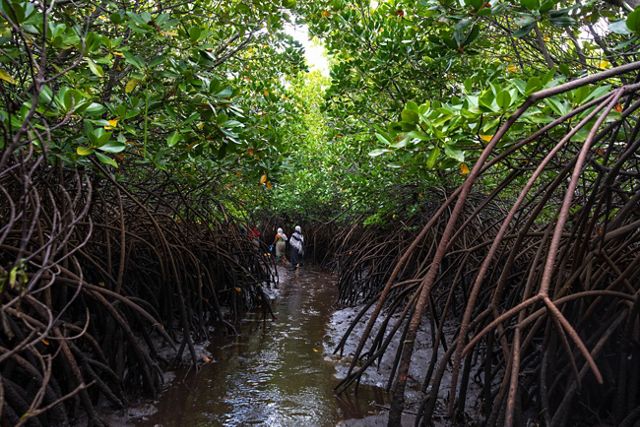
What About Mangroves?
If there is one sustainability issue that your average consumer associates with shrimp farming, it’s the degradation of mangroves to make room for new shrimp ponds. Mangrove forests are vibrant ecosystems, providing habitat for hundreds of species around the world. They are also a powerful climate tool, sequestering up to four times more carbon than terrestrial forests. But in the 1980s and 1990s, the world lost about 20% of its mangrove forests, largely due to the development of rice and shrimp farms.
Deforestation has slowed substantially since 2000 due to government and industry efforts in key geographies like Ecuador to crack down on the practice. While this progress is promising, it does not undo the damage that has already been done. It’s incumbent upon the shrimp farming sector to take a more proactive role in recovering what’s been lost and working towards ecosystem recovery in the areas they farm. Some farmers are already deeply engaged in mangrove restoration work, and similar commitments on an industry-wide scale could recover tens of thousands of acres of critical marine ecosystems.
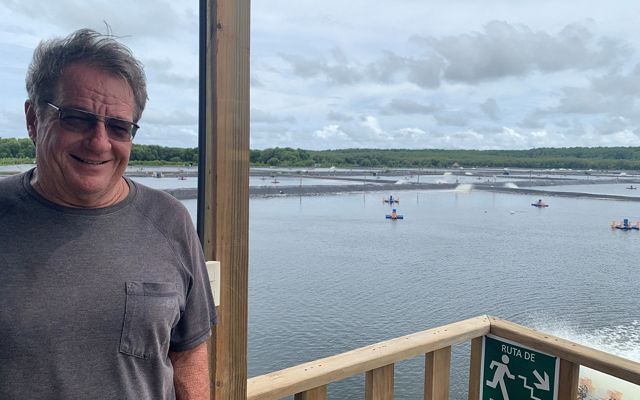
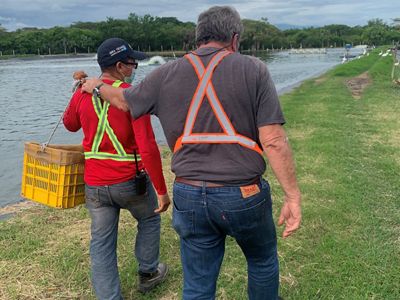
Supporting Communities and Ecosystems
Located in Southeast Guatemala, Mayasal is a shining example of what environmentally and socially responsible shrimp farming could look like. Zandy DeBeausett, Mayasal’s owner and general manager, has gone to great lengths to ensure that his farm contributes positively to the local community and ecosystem. In addition to deploying a smart aeration system, Zandy and his team have been planting mangroves alongside the farm, restoring a total of 15 hectares so far. The Cornell Lab of Ornithology, which has documented bird abundance and diversity on the farm, found that it supports upwards of 100 species.
After achieving success on his own operation, Zandy recognized that one of the best ways he could help communities is to share his knowledge. He developed a program to train farmers on the production and business practices needed to run a prosperous small-scale shrimp operation. The program has been incredibly successful, educating more than two hundred farmers. This positive result can be attributed in part to a partnership with the Guatemalan government and lenders, which provided low-cost loans to help farmers purchase equipment and get started.
Similar lending programs could support farmers throughout the Americas and Asia. Unlike most shrimp farming in the Americas, which is characterized by farms that exceed several hundred or even several thousand hectares, most of Asia’s shrimp farms are a few acres or smaller. While this structure provides livelihood opportunities, many farmers struggle financially. Additionally, it can be difficult to implement sustainability programs when there is a larger number of geographically dispersed farms. Lending programs that require borrowers to make environmental improvements could help address both problems by supporting farmers financially while reducing on-farm carbon emissions and resource use.
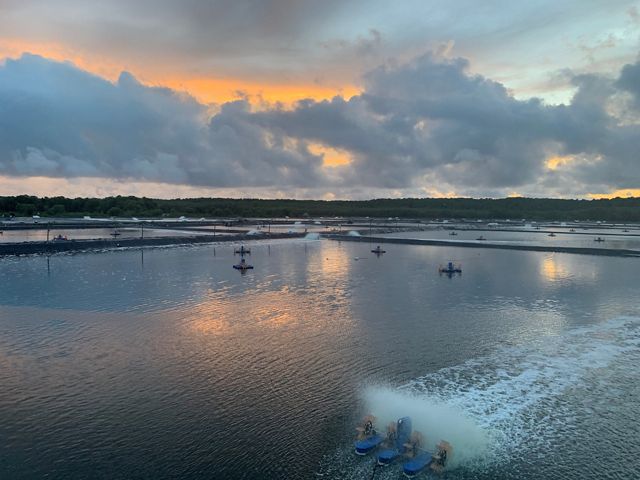
Looking Forward
Given its popularity with American consumers and outsized environmental impact, farmed shrimp holds significant potential in improving the sustainability of our seafood supply. Much of our attention should be directed towards Ecuador; though farmed shrimp has historically been dominated by Asian producers, Ecuador’s shrimp industry has steadily grown over the past two decades to become the world’s largest producer. Meanwhile, growers in other major producing geographies such as Southeast Asia are grappling with some of the industry’s least sustainable practices—addressing ongoing mangrove deforestation and encouraging technification of semi-intensive, small-scale farms—while also piloting some of the most modern, intensive production methods available. As the sector continues to expand, there’s an opportunity to encourage adoption of best practices across a range of geographies and ensure that growth is in the best interest of local peoples and ecosystems.
We aren’t starting from scratch: farms like Mayasal are evidence that sustainable and ethical shrimp aquaculture is possible. We should learn from these examples and scale them across the industry to build a shrimp supply chain that supports farmers, communities, and ecosystems.
